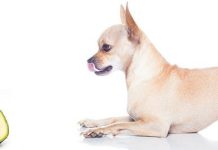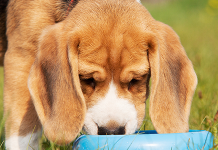When is a Bichpoo Full Grown?
A Bichpoo, also known as a Bichon Poodle or Poochon, is a mixed breed dog that is a cross between a Bichon Frise and a Poodle. The time it takes for a Bichpoo to reach full grown size can vary depending on several factors, including genetics, diet, and individual development. Generally, Bichpoos are considered to be fully grown when they reach around 9 to 12 months of age.

During the first few months of life, Bichpoos experience rapid growth, and their size can change significantly. However, after around 9 to 12 months, their growth rate slows down, and they reach their adult size.
It’s essential to note that some Bichpoos may continue to fill out and develop muscle mass even after reaching their full adult height and length. The final size and weight of a Bichpoo can also be influenced by the size of its parents, as well as whether it takes after the Bichon Frise or the Poodle side more.
If you want to get a more accurate estimate of when your specific Bichpoo will be fully grown, it’s best to consult with a veterinarian who can evaluate the dog’s individual development and provide personalized guidance.
What Impacts the Size of a Bichpoo?
The size of a Bichpoo, like any mixed breed dog, can be influenced by various factors, including:
Genetics: The size of the Bichon Frise and Poodle parents plays a significant role in determining the size of their offspring. If both parents are small, the Bichpoo is likely to be small as well. Conversely, if the parents are larger, the Bichpoo may also be bigger.
Generation: Bichpoos can be first-generation (F1), which means they are a direct cross between a Bichon Frise and a Poodle, or they can be higher-generation mixes. The size can vary depending on the specific mix of genes in each generation.
Type of Poodle: Poodles come in three sizes – Standard, Miniature, and Toy. The size of the Poodle parent will influence the Bichpoo’s size. If the Bichpoo has a Miniature or Standard Poodle parent, it will likely be larger than if it has a Toy Poodle parent.
Health and Nutrition: Proper nutrition and health care during the puppy’s developmental stages can have an impact on its growth. Good nutrition supports healthy growth, while issues like malnutrition or health problems can affect growth negatively.
Exercise: Regular exercise and physical activity can promote healthy growth and development in a Bichpoo. Adequate exercise helps in building strong muscles and bones.
Gender: In some cases, there might be a slight difference in size between male and female Bichpoos. Males may be slightly larger than females, but this is not a hard and fast rule.
Spaying/Neutering: Spaying or neutering a Bichpoo can sometimes affect their growth rate. Some studies suggest that dogs neutered before maturity may grow slightly taller than intact dogs, but their overall size difference is usually minor.
Individual Variation: Like any living being, individual variation exists. Even within the same litter, Bichpoos may differ in size due to genetic variation.
It’s important to remember that while these factors can influence the size of a Bichpoo, it’s difficult to predict the exact size a puppy will reach as an adult. Regular vet check-ups and a balanced diet can help ensure that your Bichpoo grows up healthy regardless of its final size.
How Big Do Bichpoos Get?
The size of a Bichpoo, like most mixed breed dogs, can vary depending on the specific genetics inherited from its Bichon Frise and Poodle parents. Bichpoos typically come in different size categories:
Toy Bichpoo: The Toy Bichpoo is the smallest size category and is achieved when breeding a Toy Poodle with a Bichon Frise. They generally stand around 9 to 11 inches (23 to 28 cm) in height at the shoulder and weigh between 6 to 12 pounds (2.7 to 5.4 kg).
Miniature Bichpoo: The Miniature Bichpoo is a size category achieved when breeding a Miniature Poodle with a Bichon Frise. They are slightly larger than Toy Bichpoos and usually stand around 10 to 14 inches (25 to 36 cm) in height at the shoulder. Their weight typically ranges from 12 to 18 pounds (5.4 to 8.2 kg).
Standard Bichpoo: The Standard Bichpoo is the largest size category and is achieved by breeding a Standard Poodle with a Bichon Frise. They are the biggest of the Bichpoo sizes, standing around 15 to 20 inches (38 to 51 cm) at the shoulder. Their weight usually ranges from 20 to 50 pounds (9 to 23 kg).
It’s important to note that some Bichpoos may fall in between these size categories, and there can be individual variation even within the same litter. Additionally, some breeders may use different breeding practices that can influence the size of the resulting Bichpoo.
As with any mixed breed dog, the final size of a Bichpoo is not entirely predictable, and it can be influenced by a combination of genetic factors from both parent breeds. Proper nutrition, regular exercise, and healthcare can also play a role in ensuring that a Bichpoo reaches its full potential size in a healthy manner.
When Do Bichpoos Stop Growing?
Bichpoos, like many small to medium-sized dog breeds, typically reach their full adult size between 9 to 12 months of age. This is when they generally stop growing in terms of height and length. However, it’s essential to note that some Bichpoos may continue to fill out and develop muscle mass even after reaching their full height.
While most Bichpoos reach their full height and length by one year of age, their weight may continue to change slightly up to around 18 months of age. Some Bichpoos might reach their full weight at around 12 months, while others may take a bit longer.
The rate at which a Bichpoo stops growing can also be influenced by factors such as genetics, diet, exercise, and overall health. Providing your Bichpoo with proper nutrition and regular exercise will help support healthy growth and development.
If you are concerned about your Bichpoo’s growth or development, it’s always a good idea to consult with a veterinarian. They can assess your dog’s specific situation and ensure that it is growing and developing as expected.
When Do Bichpoos Calm Down?
Bichpoos, like many other dog breeds, tend to go through various developmental stages as they grow. Puppies are usually full of energy and can be quite lively, playful, and sometimes even a bit rambunctious. As they mature, they generally start to calm down. However, the exact timing of when a Bichpoo will calm down can vary from one individual to another.
Typically, Bichpoos begin to show signs of settling down and becoming more relaxed around 12 to 24 months of age. By this time, they have gone through their puppy phase and have reached adulthood. As they mature, they often become more well-mannered and easier to manage.
Several factors can influence the rate at which a Bichpoo calms down:
Individual Personality: Just like humans, dogs have unique personalities. Some Bichpoos might naturally be calmer from a young age, while others may maintain their playful energy for a bit longer.
Training: Proper training and socialization from an early age can play a significant role in a Bichpoo’s behavior. Training helps them understand commands and appropriate behaviors, which can lead to a calmer demeanor.
Exercise: Regular exercise is crucial for a Bichpoo’s mental and physical well-being. Adequate exercise can help them burn off excess energy, reducing hyperactivity and promoting a calmer state.
Stimulation: Providing mental stimulation through interactive toys and activities can help keep a Bichpoo mentally engaged and prevent boredom-related behaviors.
Spaying/Neutering: In some cases, spaying or neutering a Bichpoo can have an impact on their behavior. Some dogs may become calmer after being spayed or neutered.
It’s essential to be patient with your Bichpoo during its development. Consistency in training, regular exercise, and positive reinforcement can help encourage a calm and well-behaved dog. If you have any concerns about your Bichpoo’s behavior or development, consulting with a professional dog trainer or veterinarian can provide helpful guidance.
Do Males and Females Grow the Same Size?
In general, male and female Bichpoos can grow to be around the same size, but there might be some slight differences between the sexes. However, it’s important to remember that individual variation exists, and not all males or females will fit the typical size expectations.
In some cases, male Bichpoos may be slightly larger than females, especially if they take after the size of the male parent. Male dogs, in general, tend to have a larger physical build and may have a bit more muscle mass than females.
On the other hand, female Bichpoos may be slightly smaller, particularly if they take after the size of the female parent. However, these differences are usually not significant, and there can be a lot of overlap in size between males and females.
The main factors that determine the size of a Bichpoo, regardless of gender, are the genetics inherited from the Bichon Frise and Poodle parents and the type of Poodle used in the mix (i.e., Toy, Miniature, or Standard).
It’s essential to focus on the individual characteristics of each dog rather than assuming that all males or all females of the breed will be the same size. Proper nutrition, regular exercise, and good healthcare will help ensure that your Bichpoo reaches its full potential size in a healthy and happy manner, regardless of gender.
How To Measure the size of a Bichpoo?
To measure the size of a Bichpoo, you’ll need a few basic tools and follow these steps:
Gather Supplies: Get a measuring tape or a ruler that shows both inches and centimeters. Have a flat surface where your Bichpoo can stand comfortably.
Stand the Bichpoo: Encourage your Bichpoo to stand up straight on all four legs. Make sure they are in a relaxed but upright position.
Measure Height: To measure the height, place the measuring tape or ruler at the ground and bring it up along the front leg to the highest point of the shoulder blade. The highest point of the shoulder blade is the withers. Note the measurement in inches or centimeters. This measurement will give you the Bichpoo’s height at the shoulder.
Measure Length: To measure the length, place the measuring tape or ruler at the base of the neck where it meets the shoulders and extend it along the back to the base of the tail. Note the measurement in inches or centimeters. This measurement will give you the Bichpoo’s length from the base of the neck to the base of the tail.
Measure Weight: Weighing your Bichpoo can be done using a pet scale or a regular scale if you can gently hold them while weighing. Be sure to place the scale on a flat and stable surface. Lift your Bichpoo onto the scale and record the weight in pounds or kilograms.
Remember that measuring a dog can be challenging, especially if they are wiggly or uncooperative. It’s best to do this in a calm and gentle manner to avoid stressing your Bichpoo.
Keep in mind that these measurements are just a snapshot of your Bichpoo’s size at a specific time. Dogs can continue to develop muscle and fill out even after reaching their full height, so their measurements might change slightly over time. If you need more accurate measurements or have concerns about your Bichpoo’s growth, consult with your veterinarian.
Bichpoo Life Expectancy
The life expectancy of a Bichpoo, like any dog, can vary depending on various factors, including genetics, diet, exercise, healthcare, and overall lifestyle. Bichpoos are generally considered to be a relatively healthy mixed breed, and with proper care, they can live a long and happy life.
On average, the life expectancy of a Bichpoo is typically around 12 to 15 years. However, some Bichpoos have been known to live even longer, reaching 16 years or more, while others may have shorter lifespans due to certain health conditions or other factors.
To ensure that your Bichpoo has the best chance at a long and healthy life, consider the following:
Regular Veterinary Check-ups: Regular visits to the veterinarian can help catch any potential health issues early on and ensure that your Bichpoo receives appropriate vaccinations and preventive care.
Balanced Diet: Providing your Bichpoo with a balanced and nutritious diet that meets their specific needs is crucial for their overall health and longevity.
Exercise: Regular exercise and mental stimulation are essential for keeping your Bichpoo physically and mentally fit. Daily walks and playtime are beneficial for their well-being.
Weight Management: Obesity can be detrimental to a dog’s health, so it’s essential to maintain a healthy weight for your Bichpoo through proper diet and exercise.
Dental Care: Dental health is often overlooked but plays a significant role in a dog’s overall health. Regular teeth cleaning and dental check-ups are important.
Socialization and Training: Proper socialization and training can help reduce stress and anxiety in your Bichpoo, contributing to a healthier and happier life.
Preventive Measures: Follow recommended preventive measures, such as flea/tick prevention, heartworm prevention, and vaccinations.
By providing your Bichpoo with a loving and caring environment, along with the necessary care and attention, you can help ensure that they have a good chance of living a long and fulfilling life. Always consult with a veterinarian if you have any concerns about your Bichpoo’s health or well-being.
Fun Facts About Bichpoos
Sure! Here are some fun facts about Bichpoos:
Designer Breed: Bichpoos, also known as Poochons or Bichon Poos, are a hybrid or designer breed, created by crossing a Bichon Frise with a Poodle. They were originally bred to combine the desirable traits of both parent breeds, such as intelligence, hypoallergenic coat, and friendly nature.
Hypoallergenic Coats: Bichpoos often inherit the hypoallergenic coat from their Poodle parent, making them a good choice for people with allergies. Their low-shedding coat requires regular grooming to keep it in good condition.
People-Oriented: Bichpoos are known for their affectionate and people-oriented nature. They thrive on human companionship and often form strong bonds with their families.
Intelligent and Trainable: Both Bichon Frises and Poodles are highly intelligent breeds, and Bichpoos inherit this trait as well. They are quick learners and tend to excel in obedience training and various dog sports.
Great Companions: Bichpoos make excellent companion dogs due to their friendly and sociable nature. They get along well with children and other pets, making them a great addition to families.
Playful and Energetic: Despite their small size, Bichpoos are quite energetic and playful. They love interactive playtime and enjoy keeping their owners entertained.
Therapy Dogs: Their friendly and gentle temperament makes Bichpoos well-suited for therapy work. They can bring comfort and joy to people in hospitals, nursing homes, and other care facilities.
Varied Coat Colors: Bichpoos can come in a variety of coat colors, including white, cream, apricot, black, and various combinations of these colors.
Watchful and Alert: Despite their affectionate nature, Bichpoos can be good watchdogs. They are alert and will often bark to alert their families of any potential intruders.
Travel Companions: Bichpoos are portable and travel-friendly due to their small size. Many owners enjoy taking them along on trips and adventures.
As with any breed, individual Bichpoos may have their unique personalities and traits. If you’re considering getting a Bichpoo, spend time with different puppies to find the one that best matches your lifestyle and preferences.
Bichpoo Full Grown: Frequently Asked Questions
When is a Bichpoo considered fully grown?
A Bichpoo is generally considered fully grown when it reaches around 9 to 12 months of age. However, some dogs may continue to fill out and develop muscle mass even after reaching their full height.
How big do Bichpoos get when they are full grown?
Bichpoos can come in different size categories, including Toy, Miniature, and Standard. The size depends on the genetics inherited from their Bichon Frise and Poodle parents. Toy Bichpoos typically stand 9 to 11 inches (23 to 28 cm) tall and weigh 6 to 12 pounds (2.7 to 5.4 kg). Miniature Bichpoos are around 10 to 14 inches (25 to 36 cm) tall and weigh 12 to 18 pounds (5.4 to 8.2 kg). Standard Bichpoos can stand 15 to 20 inches (38 to 51 cm) tall and weigh 20 to 50 pounds (9 to 23 kg).
Do male and female Bichpoos grow to the same size?
In general, male and female Bichpoos can grow to be around the same size. However, individual variation exists, and some males might be slightly larger than females.
When do Bichpoos stop growing?
Bichpoos usually stop growing in terms of height and length by around 9 to 12 months of age. Their weight may continue to change slightly up to around 18 months of age.
What impacts the size of a Bichpoo?
The size of a Bichpoo is influenced by genetics, diet, exercise, individual development, and the size of its Bichon Frise and Poodle parents.
How can I measure the size of a Bichpoo?
To measure a Bichpoo’s size, use a measuring tape or ruler to measure its height at the shoulder (withers) and its length from the base of the neck to the base of the tail. Weighing the Bichpoo can be done using a pet scale or a regular scale.
What is the life expectancy of a Bichpoo?
The average life expectancy of a Bichpoo is typically around 12 to 15 years, but individual dogs can live longer or shorter lives depending on various factors such as health and care.
Are Bichpoos good family pets?
Yes, Bichpoos make excellent family pets. They are affectionate, friendly, and generally get along well with children and other pets.
Do Bichpoos require a lot of grooming?
Bichpoos have a low-shedding, hypoallergenic coat that requires regular grooming to keep it in good condition. Regular brushing and occasional professional grooming are recommended.
Are Bichpoos good for people with allergies?
Yes, Bichpoos are often a good choice for people with allergies because they have a hypoallergenic coat that produces fewer allergens.
Conclusion
In conclusion, Bichpoos, also known as Poochons or Bichon Poos, are delightful mixed breed dogs that are a cross between a Bichon Frise and a Poodle. They are popular for their affectionate nature, intelligence, and hypoallergenic coat, making them great companions for families and individuals alike.
As Bichpoos grow, they reach their full size around 9 to 12 months of age, with variations depending on genetics and other factors. They can come in different size categories, including Toy, Miniature, and Standard.
Bichpoos tend to be energetic and playful, requiring regular exercise and mental stimulation to keep them happy and healthy. They are intelligent and trainable, making them excellent candidates for obedience training and therapy work.
When it comes to grooming, Bichpoos have low-shedding, hypoallergenic coats that require regular maintenance to keep them looking their best. They are known for their affectionate and people-oriented nature, forming strong bonds with their families.
The average life expectancy of a Bichpoo is around 12 to 15 years, but with proper care and attention, they can live even longer, providing years of joy and companionship to their owners.
If you’re considering bringing a Bichpoo into your home, remember that each dog is unique, and it’s essential to choose the one that best fits your lifestyle and preferences. Regular veterinary care, a balanced diet, proper exercise, and lots of love will contribute to a happy and fulfilling life for your beloved Bichpoo.






